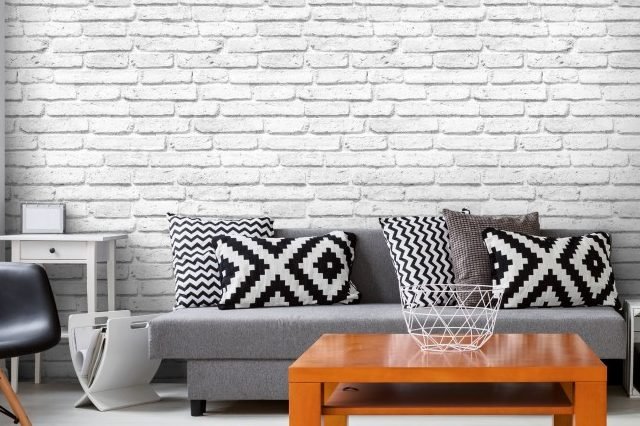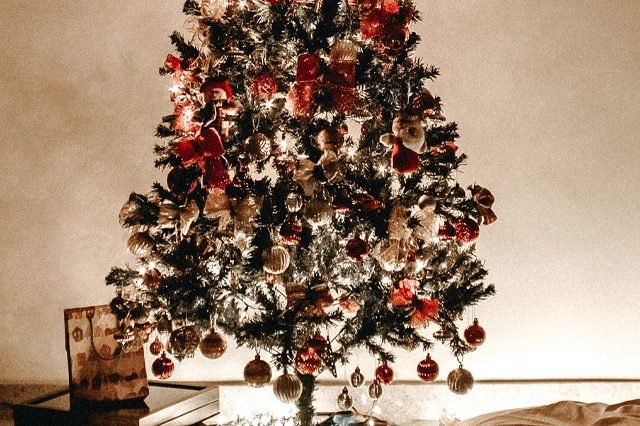How to Correctly Put Wallpaper On the Walls
When it’s time to give a room a new look, you can look for how to paint walls or opt for other alternatives such as wallpaper. If you are looking for other options to paint a house from the inside, we are going to explain how to correctly place wallpaper on the walls.
Wallpaper is a very practical and attractive option to decorate a room, since there are a large number of options to choose from. They can be found in infinite colors and models, as well as having the option of combining them with coatings or paints. In this way, we are going to tell you an alternative to how to paint a room in the conventional way.

In this way, if you want warm, avant-garde, modern, fresh spaces…, you can choose the decoration style you prefer. We tell you everything you need to know for it.
What wallpaper to choose
There are many wallpapers to choose from, which makes your choice difficult. However, we can make two different classifications so that you can find the answer you are looking for before knowing how to correctly place wallpaper on walls.
Wallpaper Composition
There are different materials that make up wallpaper. The options that exist are:
- Vinyl wallpaper. On top of the normal paper layer, it has a vinyl layer that is waterproof, making it resistant to steam, heat, sun rays, friction and 100% washable. It is perfect for areas such as the kitchen or bathroom.
- TNT paper (Non- woven fabric). It is made up of a layer of cellulose fabric and polyester fibers and another layer of acrylic vinyl. It has a pleasant touch and is washable, as well as resistant to sunlight and humidity. It is ideal for kitchens, bathrooms, corridors and children’s rooms.
- Traditional. It is composed of a layer of thin paper with a protective coating. It is cheaper but less resistant, and it is not washable. It is indicated for dry spaces and without much friction.
Types of paper according to their placement
Depending on the base of the paper and the way it sticks to the wall, we can distinguish the different types of paper:
- Self- adhesive paper: It has its own adhesive base, so you only have to peel off its back to stick it to the wall, without the need for glue. In addition, it can be taken off or repositioned.
- Apply glue to adhere the paper: This way, typical of TNT paper, involves spreading the adhesive for non-woven paper on the wall and then sticking the wallpaper.
- Apply the glue on the wall and on the back of the paper: In traditional paper it is necessary to soak the adhesive so that it is properly fixed.
- Pre-glued: The vinyl paper has the adhesive on the back layer, although it must be moistened with water so that it activates before gluing.
Instructions for correctly placing wallpaper on the walls
If you want to know how to correctly place wallpaper on the walls, you just have to follow these steps:
- Before buying wallpaper you should take the measurements of the room to know how much wallpaper you will need.
- Next you will have to measure the paper and cut the strips, adapting it to the measurements of the room.
- Once this is done, it will be time to start wallpapering. If you have a window start from one of its frames; and if there isn’t, start at one end of the wall. When wallpapering, mark a straight line using a level starting 1 inch less than the width of the wallpaper.
- Now it’s time to prepare the wall and wallpaper. The wall must be completely clean, without dust, holes or humidity, and with the surface as flat as possible and non-porous. If you previously painted it, you will need to sand the surface. This is important to avoid roughness and for the adhesive to work better.
- Place the first strip of paper. Place it keeping in mind that when you cut it you will have to leave between 3 and 5 cm left over. If there are no windows, start at one of the corners of the wall. The first strip will serve as a reference point for the rest, making sure that it coincides with the reference lines you initially marked. If you stick the strip close to the window frame, you will have leftovers on the frame that you can cut later with a cutter. Plugs and switches are another point to consider. To do this, unscrew its casing and after placing the paper, cut the corresponding hole and place them again.
- Then it will be time to place the second strip right next to the first and make sure it follows the marked lines.
- Do these steps continuously until you have the entire wall covered with wallpaper. At that time, you will have to cut the excess of the wall or window frames, before the glue gets to stick completely.
- To finish, pass a roller to fix the ends well on the edges, and using a metal ruler, with a cutter make straight cuts. When everything has been cut and the glue is dry, clean the remains of glue that may have remained on the ceiling or skirting board.







